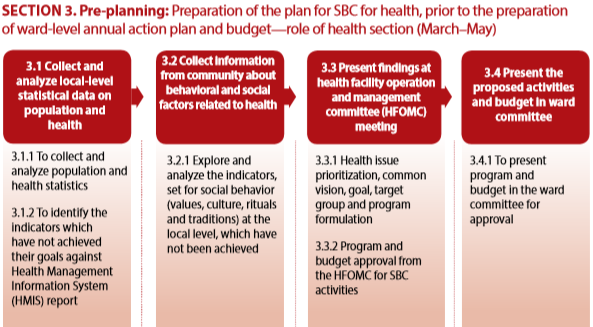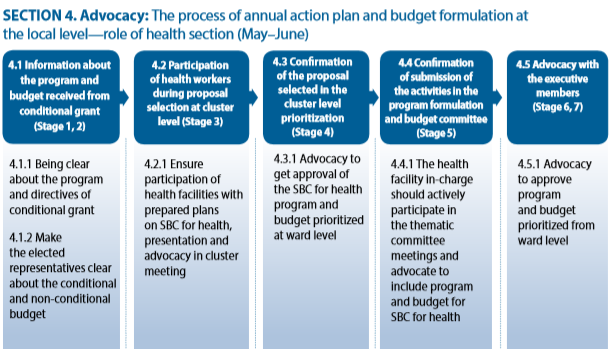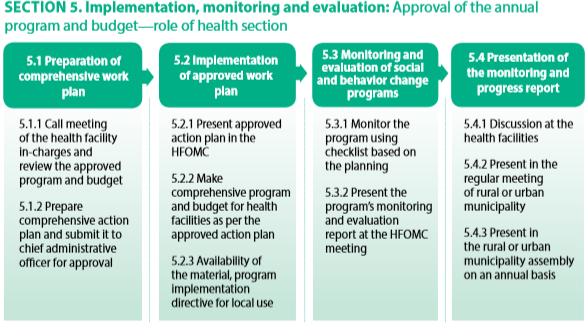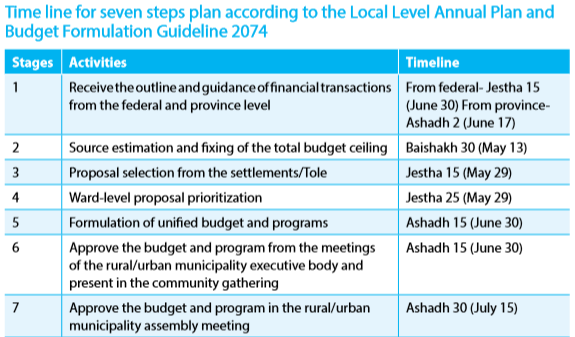Summary of Social and Behavior Change Capacity Strengthening Support Materials for Local Level
Background
Nepal has recently transitioned to a federal system where strategic, financial, and programmatic decision-making about all services, including health, are made at the local municipal level. The nexus of decision-making power has devolved to 753 of these municipalities. Local decision-making can transform a municipality to better serve its local populace; however, the transition comes with challenges. One of these challenges for those in the health sector is how health and social and behavior change (SBC) for health can lose priority in the strategic planning process, especially among a newly elected cadre of local officials. In addition, with the transition to the federal system, it was not clear how the municipal-level health coordinator—the government designate for managing health planning, including SBC—was meant to do their job within this new system.
This guide was co-designed using a human-centered approach with the municipal-level health coordinator providing guidance and feedback at every stage of the development process. The development started with process mapping the health coordinator’s job and then ensuring the incorporation of data-driven SBC into their existing roles and responsibilities—both to help them do their current job effectively and efficiently and to avoid task loading. The package was then pilot-tested in four municipalities with various municipal-level stakeholders, and feedback from these important participants in the planning process was incorporated.
The package is not a generic global SBC package. It is intended specifically to support the Nepal government staff in planning and implementing SBC for health within their own regulations, and is linked to the timing and roles of the Nepal government seven-step planning process.
SBC Palika Package Structure:
There are five sections in this package:
Section 1. Introduction to the SBC Palika Package. This section introduces the package objectives, content, intended audience, and guidelines for when to use it. It also clarifies the roles of each of the different government agencies and stakeholders needed to incorporate SBC for health into the existing system.
Section 2. Introduction to Social and Behavior Change. SBC is a new term for many local-level government staff and not well understood or valued as an important approach. This section aims to help government staff understand what SBC is and why it is important to consider when designing and implementing programs. It provides an example of a program in Nepal that used behavior change approaches and had a significant impact.
Sections 3–5. The next three sections support the government staff to incorporate SBC into the actual pre-planning phase (section 3), advocacy during the planning process (section 4), and implementation after plan approval (section 5) post government planning processes.
The blue boxes across the top explain the overall steps for incorporating SBC into the program development process based on the local-level government structure. The items in the blue parentheses are the detailed tasks within the health coordinator’s role that are essential to complete each step of the process.









